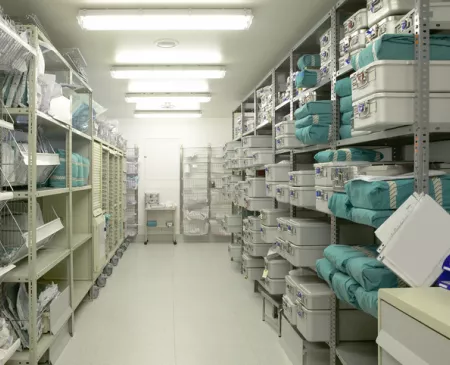The Buzz this Week
Hospitals continue to see eroding margins and steep financial losses in 2022. Health systems reporting a lower second-quarter operating income include Mayo Clinic, Intermountain Healthcare, and Kaiser Permanente, among others. Last month, Fitch Ratings revised its outlook for the U.S. not-for-profit hospital sector to “deteriorating.”
Healthcare organizations are experiencing significant labor shortages and increased expenses for items such as labor, drugs, and medical supplies—all amid rising inflation and patient volume disruption due to the Omicron surge. In addition, the American Hospital Association reported that hospitals are caring for higher acuity patients due to avoided or delayed care caused by the pandemic. These patients are more complex to treat, require more staff time, and need intensive treatments and drugs with higher costs. This increased patient acuity has impacted the average length of stay, which has created significant throughput challenges and is preventing inpatient volume increases. In turn, hospitals are faced with a multitude of challenges that hinder financial performance.
Unlike last year, hospitals no longer have access to federal stimulus funding to help offset losses and cover some of the high costs. Moody’s reported earlier this month that U.S. not-for-profit and public healthcare median financial metrics temporarily rebounded in 2021 to pre-pandemic levels, largely in part because of the COVID-19 relief funds and volume improvement. Moody’s also reported that outpatient surgeries had the strongest volume and revenue growth rates, which increased significantly. Though 2021 saw temporary improvement, many hospitals were operating on razor-thin margins prior to the pandemic and are now in a more dire situation.
Why It Matters
The current trajectory for hospital expenses and declining margins is unsustainable, and a long-term plan is needed. Over the past couple of years, healthcare organizations have looked to more traditional and “quick-hit” cost-cutting measures to manage through the financial pressures of the pandemic. These measures have included more tightly managing staff to volumes, cutting executive pay, and improving supply and purchased service contract management. The current financial outlook suggests a longer lasting shift in the industry that will require healthcare organizations to go beyond traditional measures and fundamentally rethink how to deliver the needed services at a lower cost.
Healthcare systems must be innovative both clinically and non-clinically, look toward technology to find efficiencies and financial gains, and reconceptualize how to optimize care delivery resources to meet consumers’ evolving needs and expectations. Health systems must implement innovative staffing models, promoting advanced team-based care and practicing at the top of clinicians’ licenses. Organizations must also leverage technology—such as implementing virtual scribes for effective transcription or dictation services or using remote patient safety monitoring to observe multiple patients at a time—to increase efficiency. Artificial intelligence (AI) and automation can make substantial improvements to revenue cycle performance.
The move toward outpatient care was accelerated by the pandemic, and outpatient revenue continues to outpace inpatient revenue. This pandemic-driven shift has fundamentally changed how consumers access care as patients seek virtual care options and fewer Emergency Department visits. Healthcare systems must continue to shift resources to provide care in more cost-effective and preferred settings as the decreasing demand for inpatient care continues to shrink margins.
Related Links
Becker’s
U.S. Nonprofit and Public Healthcare Medians Improved in 2021
Fitch
Inflation to Erode Margins
Fierce Healthcare
Moody's: Shift Away From Inpatient Care Will Continue to Shrink Hospital Margins
Healthcare Dive
Rising Expenses at Hospitals Are Unsustainable, AHA says
Editorial advisor: Roger Ray, MD, Chief Physician Executive.




